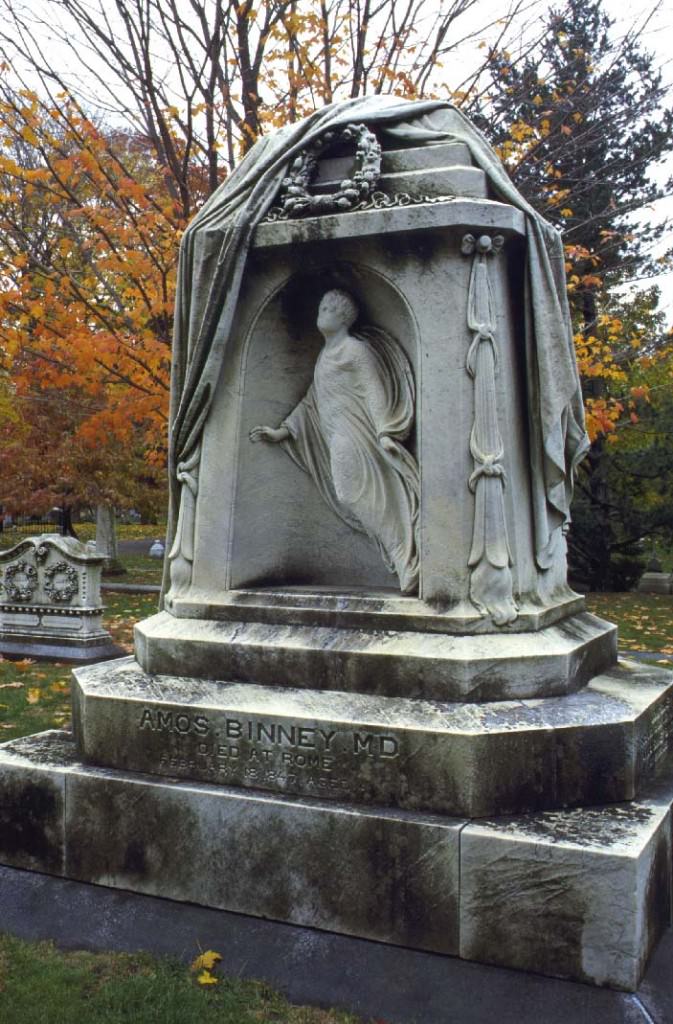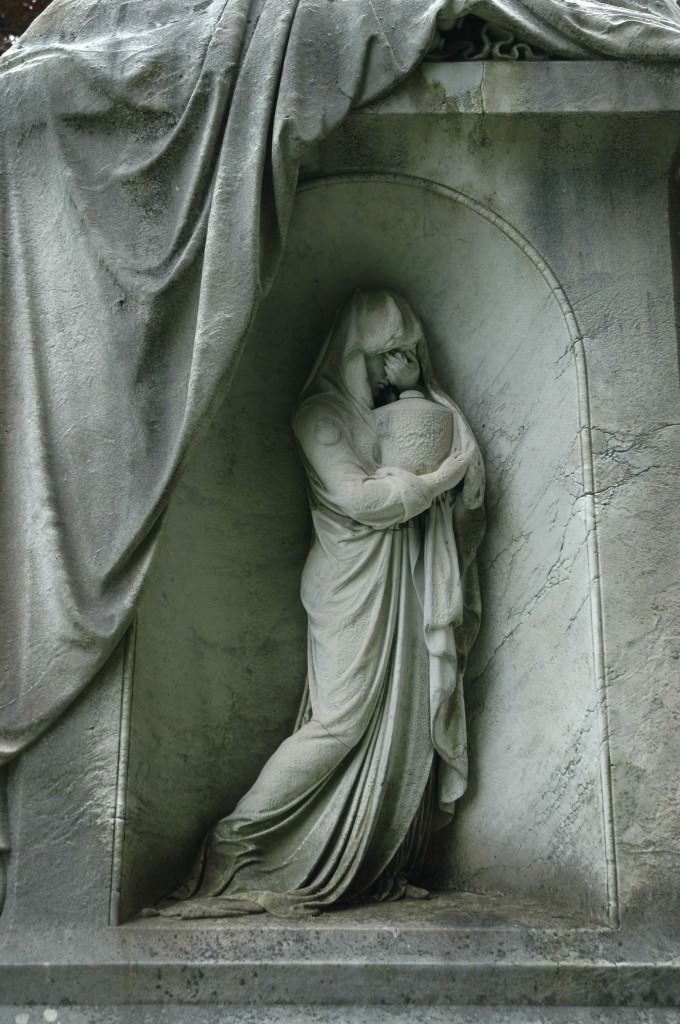Binney Monument

Amos Binney’s monument, sculpted by Thomas Crawford, is among the most historically significant monuments at the Cemetery.
Erected in 1850, the American Neo-Classic, Neo-Roman sculpture was an incredibly complex and significant funerary monument. While Crawford’s aesthetic is apparent in the sculpture, it also bears the influence of Mary Ann Binney, whose sophisticated taste echoed her late husband’s.
The entire Carrarra marble work is ‘shrouded’ by Crawford’s realistic drapery, which creates the theatrical effect, when ‘pulled back’ on either side, of revealing the scenes behind it. The front of the monument features the common Christian symbol of the spirit ascending to Heaven. This spirit was typically represented as female in funerary sculpture, however Crawford reworked the image to depict Binney’s male spirit (top image). For the sake of modesty, he clothed Binney in drapery whose ripples evoked the movement of the spirit upwards into Heaven.
The reverse of the monument features a contrast to the lightness and optimism of the front; here, the body of the widowed woman is shrouded in heavy drapery that drags at her feet: she is visibly weighed down by grief (above). She clutches the ashes of her husband to her chest, hiding her face in sorrow and mourning.
Crawford was a prominent American sculptor and had planned to complete many funerary works in his career. Tragically, he died at the age of 44 before he was able to realize any of these works, making the Binney Monument the only work of its kind within Crawford’s oeuvre. It was named one of “America’s Treasures” by the White House Millenium Council and the National Trust for Historic Preservation.

Leave a Reply